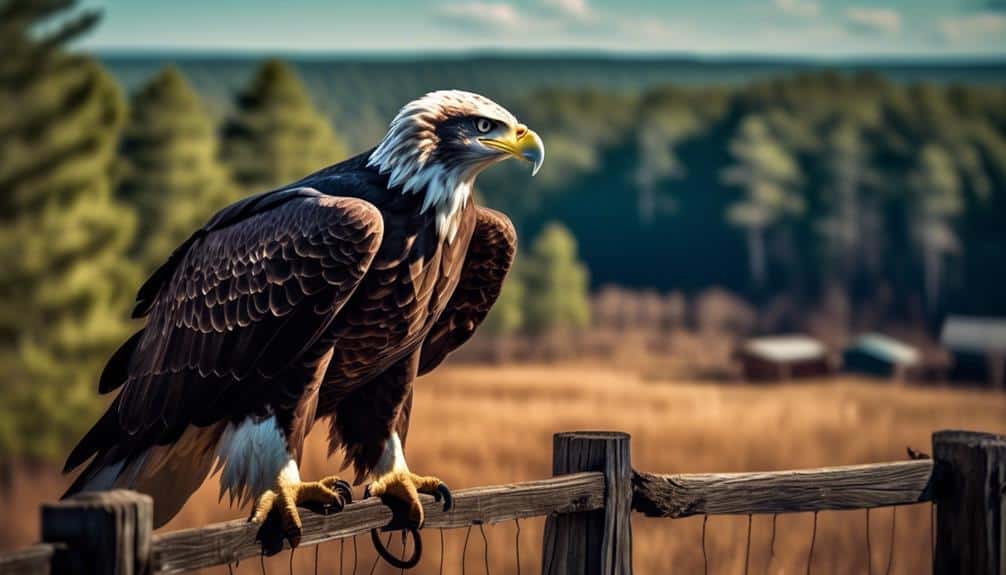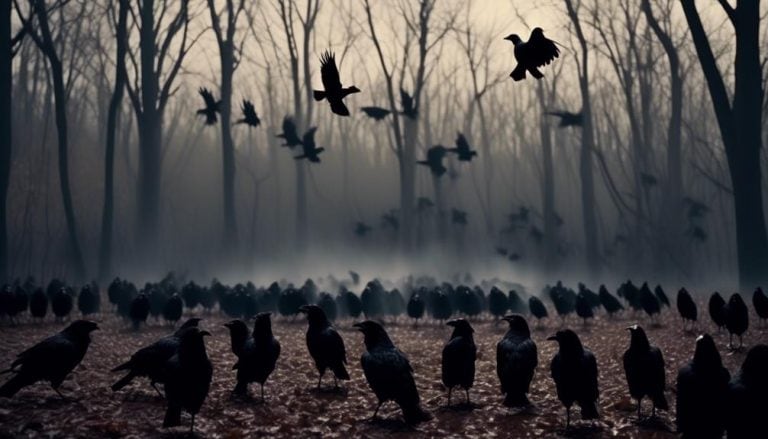Have you ever wondered if Alabama is home to a diverse population of birds of prey? Well, let's dig into the topic and explore the truth behind this intriguing theory.
From the majestic Bald Eagle to the fierce Red-tailed Hawk, Alabama boasts a rich variety of raptors that inhabit its skies and landscapes. But what makes these birds so unique and how do they adapt to their surroundings?
Join me as we unravel the secrets of Alabama's birds of prey and discover the efforts being made to conserve these magnificent creatures. Get ready to soar into the world of Alabama's avian predators, where every turn of the page promises a fascinating glimpse into their captivating lives.
Types of Birds of Prey
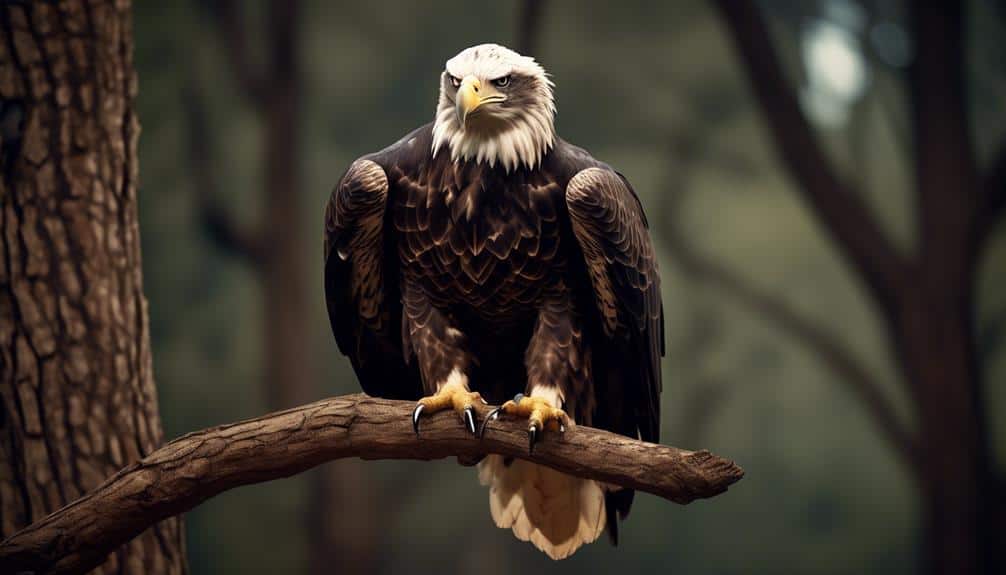
There are several types of birds of prey that can be found in Alabama, each with its own unique characteristics and hunting techniques.
One such bird is the Red-tailed Hawk (Buteo jamaicensis). Known for its broad wingspan and distinctive red tail, this species is a master of soaring flight. Red-tailed Hawks primarily hunt from elevated perches, such as trees or utility poles, and employ a sit-and-wait hunting technique. They patiently scan the surrounding area for their prey, which can range from small mammals to reptiles and birds. Once a suitable target is spotted, they swiftly dive down and seize it with their sharp talons.
Another prominent bird of prey in Alabama is the Bald Eagle (Haliaeetus leucocephalus). With its iconic white head and dark brown body, the Bald Eagle is a symbol of strength and majesty. These birds exhibit nesting behaviors that are remarkable in their complexity. They construct large nests, called eyries, in tall trees near bodies of water. These nests can weigh up to two tons and are reused year after year.
Bald Eagles primarily feed on fish, employing a fishing technique called 'plucking,' where they swoop down and snatch fish from the water's surface with their talons.
Unique Characteristics of Alabama's Raptors
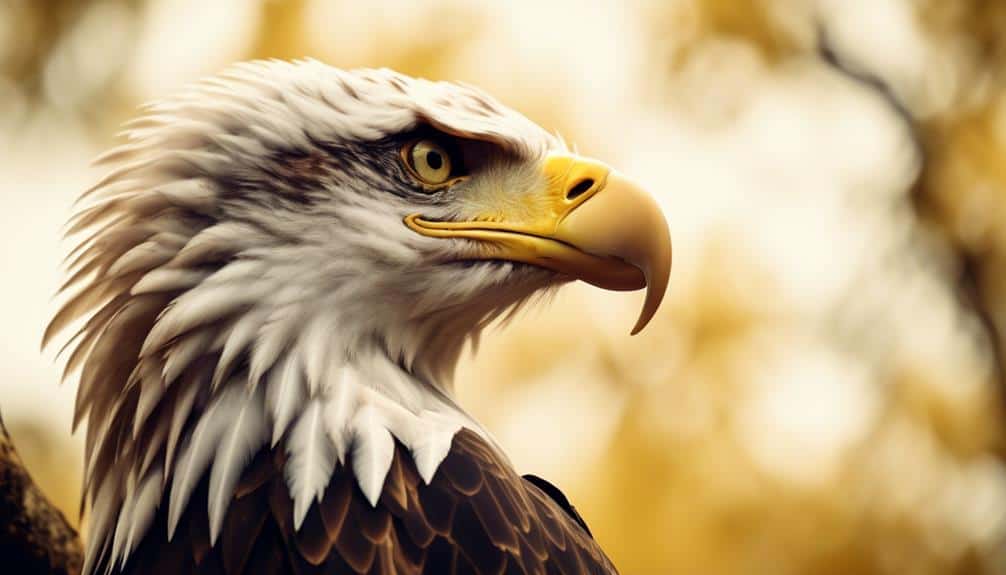
Alabama's raptors possess unique characteristics that distinguish them from other birds of prey. These distinctive traits contribute to their survival and play a vital role in maintaining the ecological balance in Alabama's diverse habitats. Let's explore some of these fascinating features in the table below:
| Raptor Species | Unique Characteristics |
|---|---|
| Bald Eagle | Wingspan of up to 7 feet; iconic white head and tail feathers |
| Red-tailed Hawk | Broad, rounded wings; reddish-brown tail; keen eyesight |
| Peregrine Falcon | Fastest bird in the world; capable of reaching speeds over 240 mph |
| American Kestrel | Vibrant plumage with rusty red back; remarkable hovering ability |
| Cooper's Hawk | Short, rounded wings for maneuvering through dense forests; long tail for agility |
Alabama's raptor population has experienced significant growth in recent years, thanks to dedicated conservation efforts. However, some species still face the threat of endangerment. The Red-cockaded Woodpecker and the Swallow-tailed Kite, both classified as endangered, rely on Alabama's forests for nesting and foraging. Protecting their habitats is crucial for their survival.
Understanding these unique characteristics and the importance of preserving their habitats will help ensure the continued success of Alabama's raptors. By appreciating the diversity and beauty of these birds, we can actively participate in their conservation and contribute to a thriving ecosystem for generations to come.
Habitats and Distribution of Birds of Prey
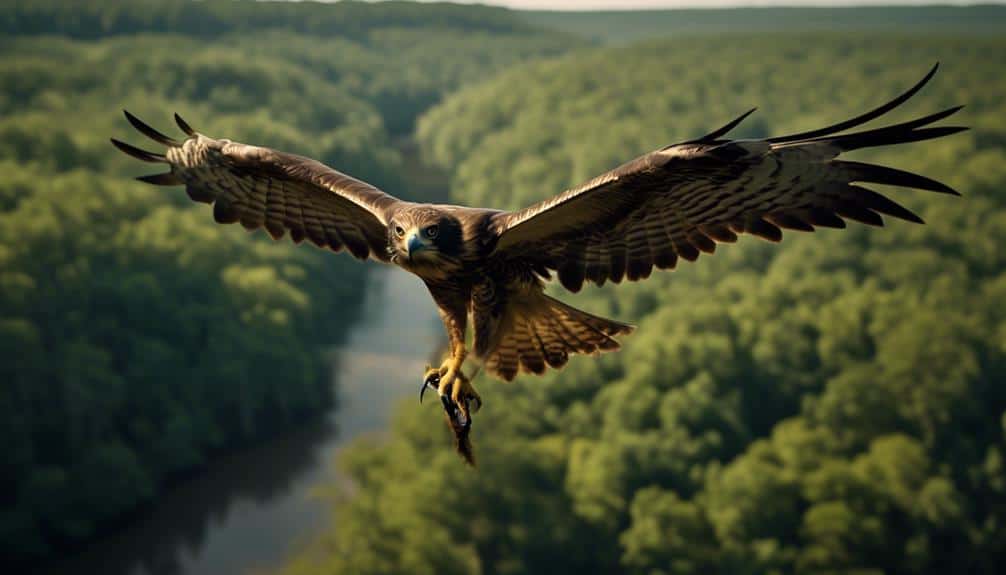
Birds of prey, also known as raptors, inhabit a variety of habitats and have a wide distribution throughout Alabama. Understanding their habitats and distribution is crucial for their conservation and management. Here are three key points regarding this topic:
- Migration patterns of Alabama's birds of prey: Many birds of prey in Alabama are migratory, meaning they travel to different regions during specific seasons. For example, the American kestrel, a small falcon, migrates southward during the winter months. Understanding their migration patterns helps researchers track their movements, study their population dynamics, and implement effective conservation strategies.
- Relationship between birds of prey and their prey species in Alabama's ecosystems: Birds of prey play a vital role in maintaining the ecological balance by controlling the populations of their prey species. For instance, the red-tailed hawk preys on small mammals such as mice and rabbits, helping to regulate their population size. This relationship between predators and prey is essential for the overall health and stability of Alabama's ecosystems.
- Distribution across various habitats in Alabama: Birds of prey can be found in diverse habitats, including forests, grasslands, wetlands, and coastal areas. Each species has specific habitat requirements based on their foraging behavior, nesting preferences, and hunting strategies. For instance, the osprey is commonly found near bodies of water, as it predominantly feeds on fish. Understanding their habitat preferences helps in identifying suitable locations for conservation efforts and promoting their coexistence with human activities.
Conservation Efforts for Alabama's Raptors
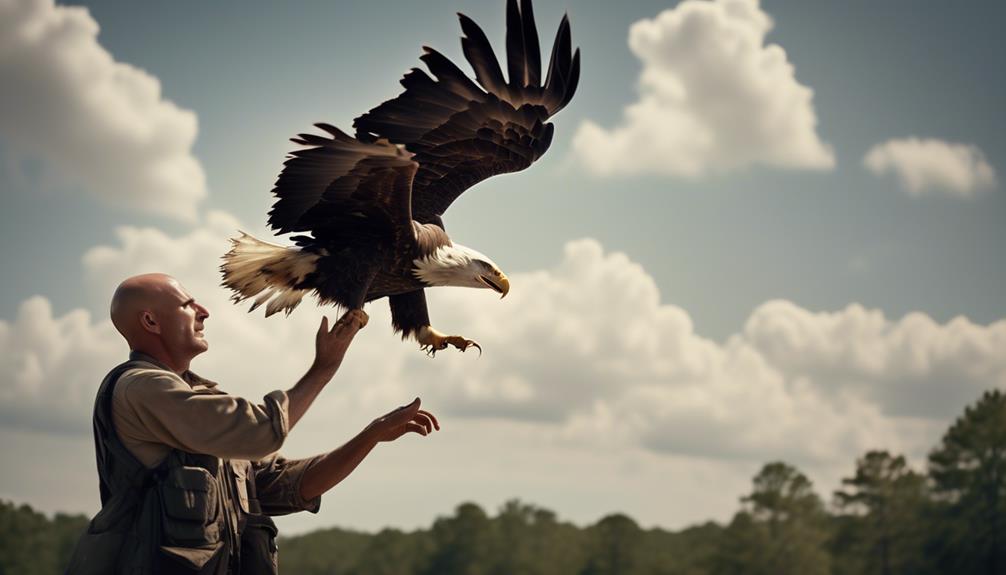
Conservation efforts for raptors in Alabama are essential for ensuring the long-term survival and well-being of these magnificent birds. Successful breeding programs play a crucial role in maintaining stable populations and genetic diversity. Organizations like the Alabama Wildlife Center and the Alabama Department of Conservation and Natural Resources have implemented captive breeding programs for endangered species such as the Red-cockaded Woodpecker and the Bald Eagle. These programs aim to increase the number of individuals in the wild and reduce the risk of extinction.
However, there are numerous threats and challenges facing Alabama's raptors that must be addressed to ensure their conservation. Habitat loss due to urbanization and agriculture remains a significant concern. Fragmentation of habitats limits the availability of suitable nesting and foraging areas for these birds. Additionally, pollution and the use of pesticides pose a threat to their survival. These chemicals can accumulate in their food chain, leading to reproductive problems and weakened immune systems.
Furthermore, illegal hunting and trapping continue to be a major threat to raptors in Alabama. The illegal capture and trade of these birds for falconry or the pet trade put additional pressure on their populations. Education and awareness programs are crucial for promoting responsible and ethical behavior towards raptors and combating these illegal activities.
Tips for Birdwatching in Alabama

When birdwatching in Alabama, it's important to consider the specific habitats and behaviors of the various bird species found in the state. Alabama boasts a diverse range of bird species, making it a prime location for birdwatching enthusiasts.
Here are some tips to enhance your birdwatching experience in Alabama:
- Birdwatching Equipment: Invest in a good pair of binoculars to get a closer look at the birds. A field guide specific to Alabama's birds can also be helpful in identifying different species. Additionally, consider carrying a camera to capture memorable moments.
- Best Birdwatching Spots: Alabama offers a variety of habitats that attract different bird species. Some popular spots include the Wheeler National Wildlife Refuge, where you can find waterfowl, shorebirds, and bald eagles. The Bon Secour National Wildlife Refuge is another great location to spot migratory birds, while the Sipsey Wilderness Area offers opportunities to see forest-dwelling species like woodpeckers and warblers.
- Respect Wildlife: While birdwatching, it's essential to respect the birds and their habitats. Keep a safe distance to avoid disturbing them and their nests. Follow ethical guidelines and avoid excessive noise or sudden movements that could startle or disrupt the birds.
Frequently Asked Questions
What Is the Average Wingspan of Birds of Prey in Alabama?
The average wingspan of birds of prey in Alabama varies depending on the species. Factors such as habitat, prey availability, and regional climate influence the population's wingspan variations.
How Many Species of Birds of Prey Can Be Found in Alabama?
In Alabama, there are a variety of bird species known for their impressive hunting habits and average lifespan. It is fascinating to explore the diverse range of birds of prey that can be found in this region.
Do Birds of Prey in Alabama Migrate?
Birds of prey in Alabama do migrate. It is interesting to note that they often hunt together in groups called "kettles." They communicate through vocalizations and body language to coordinate their hunting strategies.
Are There Any Endangered Species of Raptors in Alabama?
Yes, there are conservation efforts for endangered raptors in Alabama. These efforts aim to protect their habitats, promote breeding programs, and educate the public about the importance of birds of prey in the ecosystem.
What Is the Best Time of the Year to Spot Birds of Prey in Alabama?
During my research, I've discovered that the best time of year to spot birds of prey in Alabama is during their migration season. Alabama's unique landscape offers a variety of habitats for these majestic creatures.
Conclusion
In conclusion, Alabama is home to a diverse range of birds of prey, each with its own unique characteristics and habitat preferences.
Conservation efforts in the state have played a crucial role in protecting these magnificent creatures and their habitats.
For birdwatchers in Alabama, it's essential to remember that patience is a virtue when observing these raptors in the wild.
So, keep your eyes peeled and let nature take its course, for good things come to those who wait.

